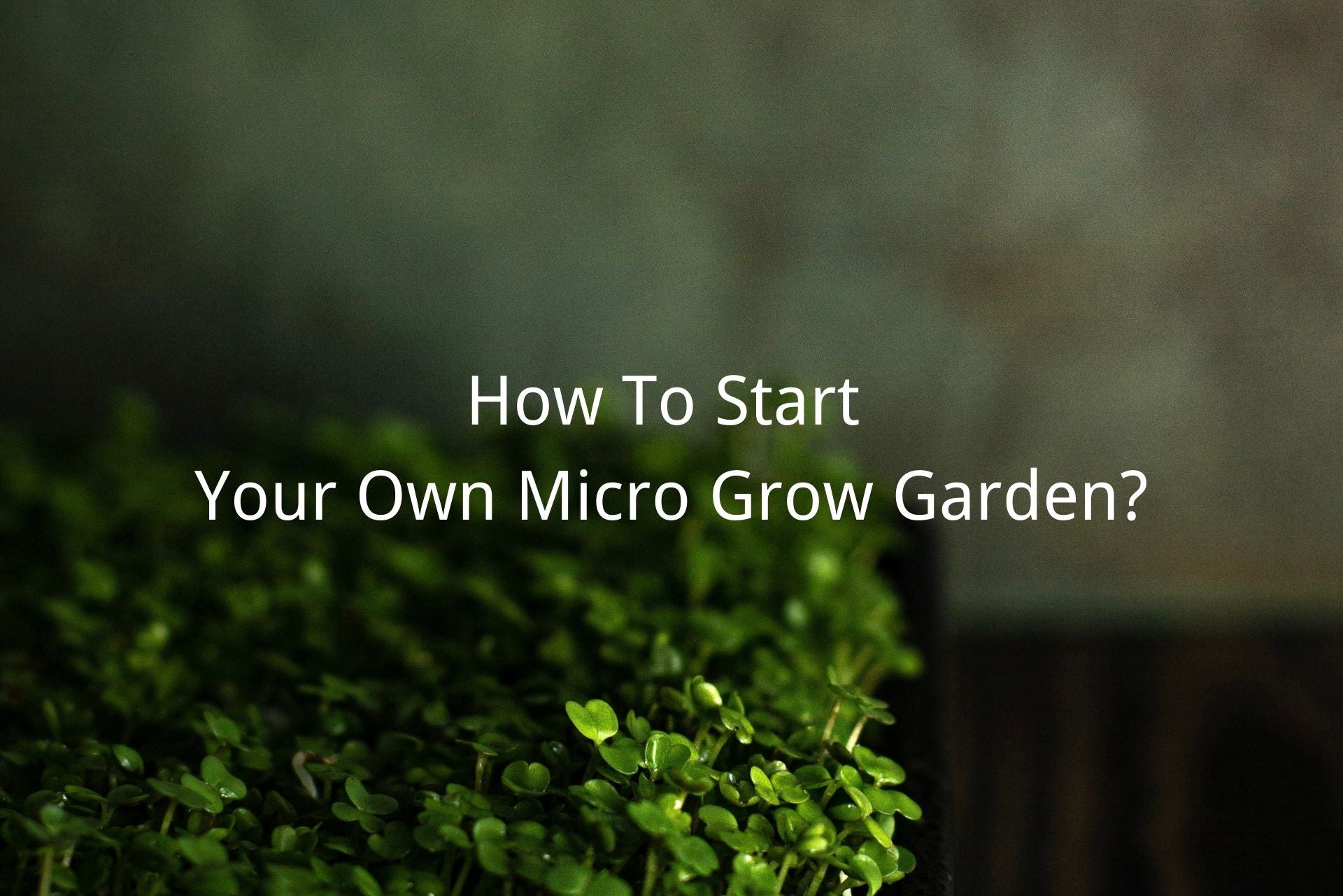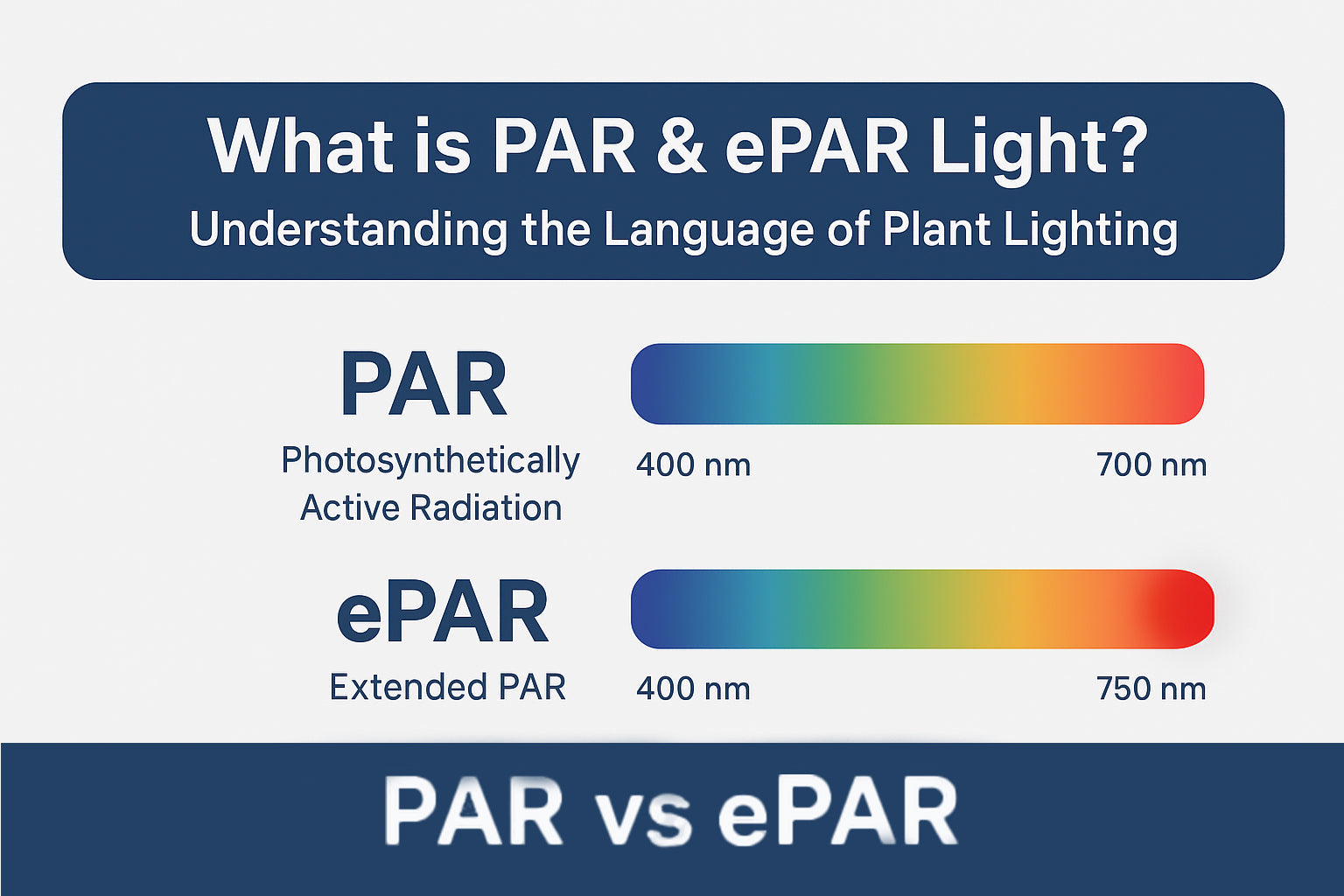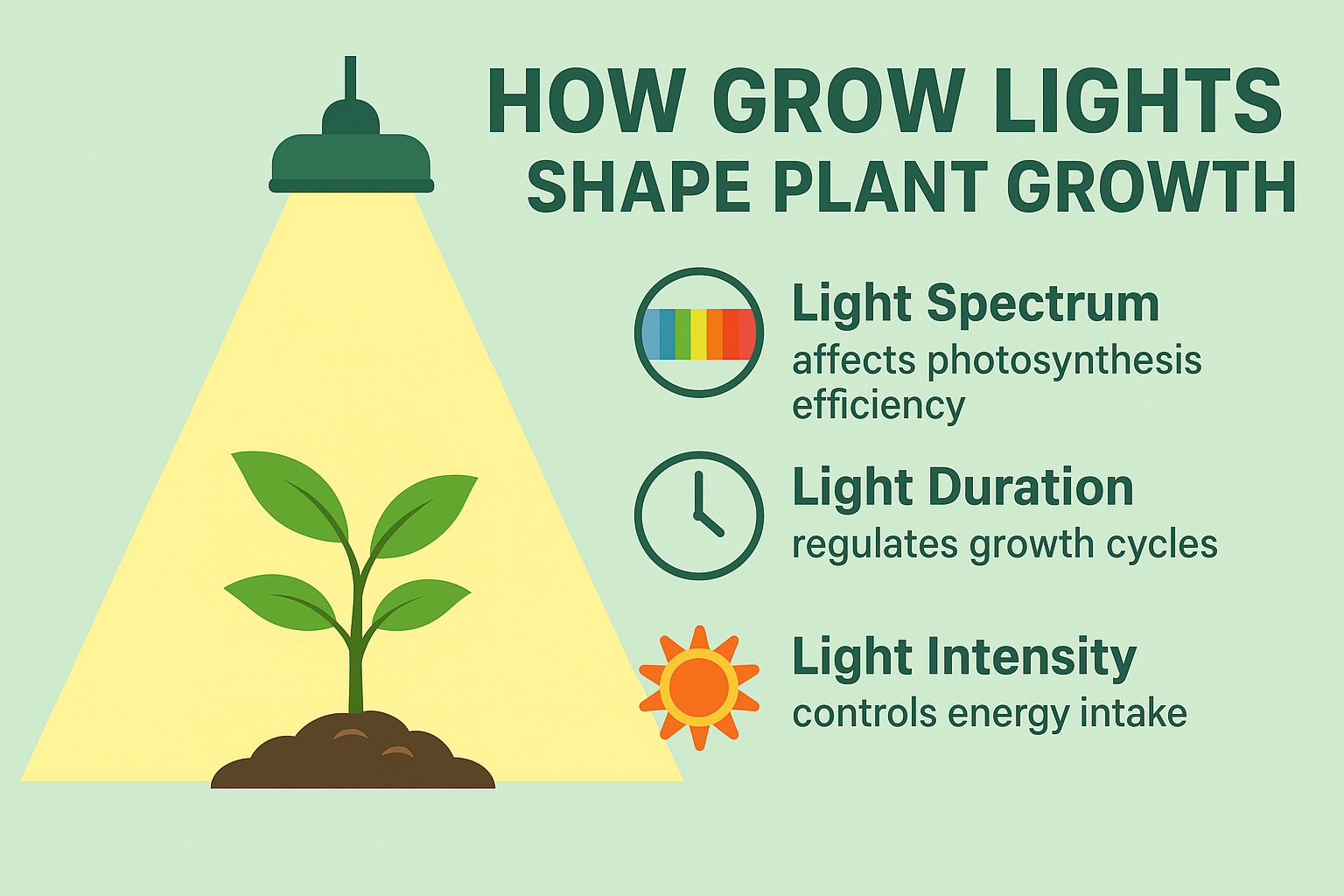
How To Start Your Own Micro Grow Garden?
Want to enjoy home-grown veggies and don't have the patience to grow full-sized plants? Don't worry.
Micro grow plants or microgreens are one of the quickest growing crops.
They're beginner-friendly and don't require you to have in-depth knowledge of gardening.
With a few materials and a pack of seeds and perhaps, a teeny tiny bit of patience, you can have your very own micro grow garden.
These mini vegetables or 'vegetable confetti' don't require you to have a full-fledged garden — you can start growing microgreens in a micro grow tent with minimal investment like indoor grow lights.
In the end, you'll have a micro grow yield of fresh veggies. Not only do you get amazing, home-grown veggies, but you can grow a variety of microgreens in the same tray.
Ready to get started?
In this article, we'll explore:
- Part 1: What Are Microgreens?
- Part 2: Which Plants Can Be Grown As Microgreens?
- Part 3: What Materials Do You Require To Grow Microgreens?
- Part 4: Micro Grow Gardening: A Step By Step Guide
What Are Microgreens?
Microgreens, also known as 'vegetable confetti', are tiny vegetable greens. They are harvested after the first few cotyledon leaves are developed. They are typically 1-3 inches or about 3-7 centimeters in height.

Image Source: foodsafetynews.com
Microgreens are quite popular now and can be found in supermarkets and grocery stores. They can be tossed in salads, used as garnishes, and consumed for their nutritional benefits and to enhance the flavor and appearance of a dish.
Like other vegetables, they can also be consumed raw.
Microgreens can be really packed in tightly in the container that they're growing in — spacing is not an issue because you'll be harvesting them before they mature into bigger plants.
Some microgreens (such as herbs) grow slowly and take longer than others.
Let's take a look at the plants that can be grown as microgreens.
Which Plants Can Be Grown As Microgreens?
Several plants can be grown as microgreens. You can grow an assortment of leafy vegetables or have your own microgreen salad garden. If you enjoy cooking, a micro grow herb garden can be a perfect choice.
Typically, beginners start by growing one kind of micro grow crop such as chia, broccoli, arugula, clover, cabbage, kale, cauliflower, etc.

Other vegetables that you can grow in a container are radishes, carrots, peas, pak choi/bok choi, amaranth, mustard, and beets.
Some micro grow herbs that one can grow in their garden are basil, chives, cress, fennel, coriander, cilantro, dill, oregano, thyme, and mint.
Microgreens can be grown in a single container or multiple containers. If you grow them in different containers, you can easily mix them after the harvesting process. If you prefer to grow multiple types of microgreens together in the same container, you can buy a premixed seed pack.
What Materials Do You Require To Grow Microgreens?
Here's a handy list of things you would require in a micro grow setup:
Microgreen Seeds
Make sure to opt for seeds or seed mixes that are specifically suggested for micro grow gardening.
Growing Medium
The best growing medium for micro grow plants is a soilless potting mix without any added pesticides or chemicals. You can make potting mix yourself by combining 80% organic material (that includes peat moss, coco coir, and sterilized compost) and 20% perlite.
A potting mix isn't required if you're growing in a hydroponic system.
Microgreen trays
Make sure to choose trays that are made up of safe, BPA-free, food-grade plastic. Choose trays that come with drainage holes in them.
Grow lights
A micro grow light essential if you are growing plants indoors.
150W LED grow lights can be used for microgreen gardening. These are super helpful, especially if you're growing microgreens on a larger scale for commercial purposes.

If you're planning to grow these micro grow plants outdoors or on a window sill, additional full-spectrum lighting is not needed.
Tray Covers
A lot of microgreen trays come with covers. A tray cover would only be required if your container doesn't come with a cover of its own.
You can use plastic trays, germination domes, or even paper towels as covers. Spray some water on the paper towels to keep them damp.
Optional:
Heat mats
Heat mats are helpful if your house is cooler and you want to fasten the germination process. They're available in plenty of sizes and materials.
Nutrient solutions
Microgreen plants would require additional nutrients if you're growing them in a hydroponic system.
Spray bottle
This is required for frequent misting to keep the paper towels damp.
Now that you know what materials you need, let's take a look at the step-by-step guide to growing microgreens.
Micro Grow Gardening: A Step By Step Guide
Once you have all the materials ready, it's time to get down to business.
Step 1
The first thing that you need to do is to fill the microgreen tray with about 2 inches of soil.
These microgreens would grow in the tray only until the cotyledon stage i.e only a few days to a couple of weeks. They don't have extensive root systems which is why this amount of soil should be adequate.
Once you've added the soil, it is time to sprinkle the micro grow seeds. You don't need to worry about overcrowding the tray or having adequate space between the plants. Ensure that you have a thick layer of seeds.
Step 2
Next, add some soil over the seeds to lightly cover them. Use your hands to pack the seeds in.
Step 3
The final step is to water your plants with a generous amount of water. Make sure that they are damp and NOT drenched in water. You can use a watering can for this purpose.
Microgreen seeds are left to germinate in the dark for the first few days after which they are exposed to light to encourage growth.
PRO TIP:
- Several seeds in the market are 'light-determinate germinators' — they require exposure to light to germinate and shouldn't be covered with soil. Lettuce, snapdragons, and poppies are some of the seeds that fall in this category. Read the labels of the seed packets to make sure that you're sowing them correctly.
- After germination, take your tray and put it in a sunny spot such as a window sill. If you don't have access to a sunny spot or live in an area where the weather is cold, you can use a micro grow tent set-up. Place the microgreen tray right under the grow lights.
- To make the most of the space available at hand, you can have an indoor vertical grow rack system in your micro grow setup. This way, you'll be able to utilize the empty space by having racks mounted one on top of the other. You will be able to have a huge yield in the same batch.
- If you see insects or bugs on your micro grow plants, rinse them well before eating them. Avoid using harmful chemicals and pesticides on your produce.
Frequently Asked Questions
Is There A Difference Between Microgreens And Sprouts?
Most people think that they are the same but that's not true.
Sprouts can be consumed whole, including seeds, roots, and sprouts. They can be grown without soil in a container. One can even use a layer of cotton to grow them (remember those science experiments in school?). Sprouts germinate rather quickly and grow within a week.
On the other hand, microgreens are tiny plants that are harvested a few weeks after the cotyledon stage. Generally, growers consume only the parts of the plant that grow above the soil i.e the leaves and the stem. Micro grow plants can be grown indoors in a hydroponic system.
If you're still confused, remember this:
you sprout seeds if you consume the seed and the stems of the crop (such as beans, peas, chickpeas, lentils).
If you consume the leaves and the stems (broccoli, arugula, kale, spinach), you grow them in the form of microgreens.
Of course, a lot of times, these two methods overlap.
Can You Be Allergic To Microgreens?
If you're allergic to certain plants, you'll most likely be allergic to the microgreen versions of these plants as well.
Which microgreen plants should you avoid growing and consuming?
It is recommended to avoid growing and consuming microgreens from the nightshade family (such as potatoes, peppers/capsicums, eggplant, tomatoes) since the sprouts of these plants are poisonous. They contain toxic alkaloids such as solanine (found in green potatoes and leaves of pepper plants).
Similarly, high amounts of buckwheat microgreens can cause light sensitivity in the skin of some people. This is because of the presence of a chemical compound called fagopyrin which is slightly toxic.
Can Microgreens Be Grown Without Soil?
Yes, absolutely!
Microgreens can be grown in a hydroponic system where you provide the plants with nutrients OR they can be grown in a soilless potting mix or a soilless medium such as coco coir. Since these micro grow plants are harvested after the cotyledon stage, they don't require nutrients for a long period.
How Much Light Do Microgreens Require?
Microgreens can be easily grown on your kitchen window sill if it gets enough sunlight. Ideally, they require about 4-6 hours of light in a day.
If you're growing these plants indoors in a shaded area such as a micro grow tent, you will have to provide them supplemental light using a grow light.
The plants growing closer to light would grow faster. Make sure that all your micro grow plants get light evenly so that they grow at the same pace.
How Much Water Do Microgreens Need?
Using a spray bottle, give the microgreen tray a couple of sprays of water.
While the seeds are germinating, growers should mist the seeds and the paper towel or cover them with water every twelve hours.
Do Microgreens Require Fertilizer?
Well, it depends!
If you're growing micro grow plants in a medium that has no nutrients (such as coconut coir), it might be crucial to supply appropriate nutrients. Likewise, it is vital to add fertilizers or nutrient solutions when you're growing in a soilless medium or a hydroponic system.
When growing in high-quality soil, microgreens would not need micro grow fertilizer and they can germinate without it.
However, it must be noted that with the addition of micro grow fertilizer, microgreens might grow faster, develop better, have richer color, and have bigger cotyledons and leaves.
A well-balanced, water-soluble, or trace-mineral micro grow fertilizer might help enhance the growth of the plants.
Will Microgreens Grow Again After The Harvest?
If you're growing full-sized plants, you'll easily be able to pluck a few leaves and toss them into whatever dish you're making and the plant will grow back normally.
However, unfortunately, micro grow plants can only be harvested once — after the first few leaves have been harvested, there are no leaves left behind that will utilize the light to grow and thrive.
The good news is that several microgreen varieties grow back a few times, as long as you only harvest the parts above the bottom leaves. These include peas, lentils, and beans. The taste starts to diminish after the first batch but you can get one or two more batches with these plants.
What Is The Shelf-life Of These Microgreens?
It is best to harvest micro grow plants and consume them fresh instead of cutting them and storing them in the fridge. By doing this, you'll be able to enjoy the freshest produce.
If your microgreens have reached the end of the cycle and you still haven't harvested and consumed them, then you can cut them and store them in the fridge.
Take an airtight container and layer it with a paper towel. Add your microgreens to the container and put the lid on.
As a general rule of thumb, they'll stay good in the fridge for about 10-12 days. Shelf-life of different microgreens varies.
Related Posts
Featured Products
Blog Posts
Contact Us with Any Idea!
- Choosing a selection results in a full page refresh.
!
































